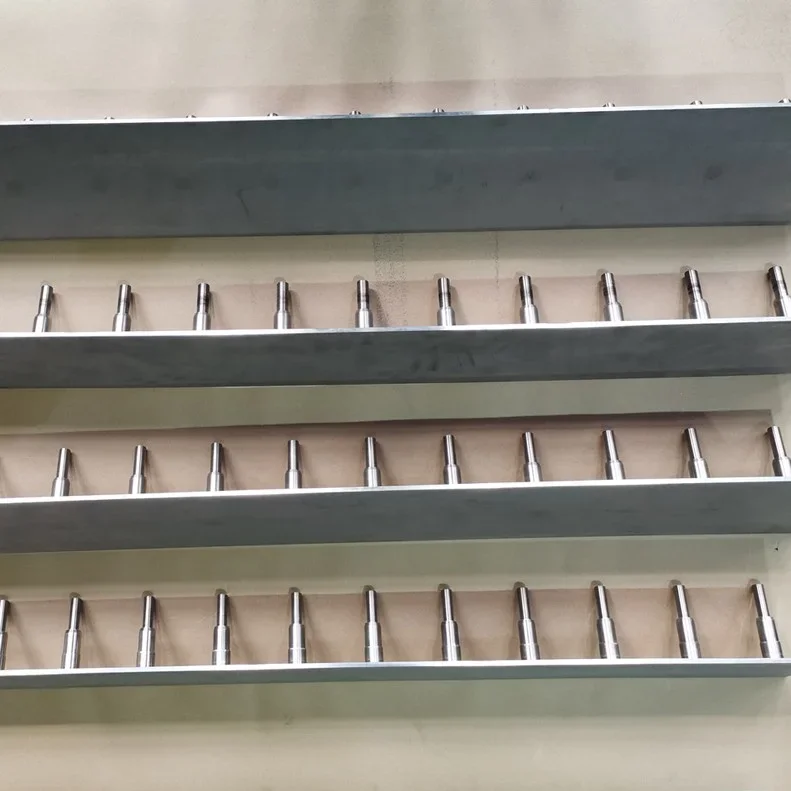In the realm of wastewater treatment, finding efficient and sustainable solutions is crucial for environmental preservation and public health. Electrochemical wastewater treatment is a promising technology that utilizes electrode materials to remove pollutants from industrial and municipal wastewater. Among these electrode materials, electrodeposited copper foil titanium anode plates have emerged as an effective and versatile choice. This article explores the applications, benefits, and working principles of electrodeposited copper foil titanium anode plates in electrochemical wastewater treatment.
I. Understanding Electrochemical Wastewater Treatment
Electrochemical wastewater treatment is a process that involves the use of direct electrical current to drive chemical reactions and eliminate contaminants from water. It serves as an alternative to traditional wastewater treatment methods such as chemical coagulation, filtration, and biological processes.

II. Why Choose Electrodeposited Copper Foil Titanium Anode Plates?
1. Superior Conductivity and Durability:
Electrodeposited copper foil titanium anode plates possess excellent electrical conductivity and mechanical strength. Titanium acts as the substrate, providing durability and corrosion resistance, while copper foil provides high electrical conductivity. This combination ensures consistent and efficient electron transfer during the treatment process.
2. Enhanced Catalytic Activity:
Copper is known for its excellent catalytic activity, which is vital in accelerating electrochemical reactions. By depositing a thin layer of copper on the titanium substrate, the electrode surface area increases, leading to improved catalytic activity and better pollutant removal rates.
3. Self-Cleaning and Low Maintenance:
The electrodeposited copper foil titanium anode plates have a self-cleaning property due to the formation of an oxide layer on the titanium surface. This oxide layer prevents the accumulation of contaminants and minimizes fouling, resulting in reduced maintenance requirements and prolonging the lifespan of the anode plates.
III. Applications of the Electrodeposited Copper Foil Titanium Anode Plates
1. Removal of Organic Pollutants:
Electrochemical oxidation on the surface of electrodeposited copper foil titanium anodes efficiently breaks down organic pollutants present in wastewater. The catalytic activity of copper facilitates the oxidation of complex organic compounds, promoting their conversion into simpler and less harmful byproducts.
2. Removal of Inorganic Pollutants:
Electrodeposited copper foil titanium anode plates can effectively remove various inorganic pollutants such as heavy metals and cyanides. Through redox reactions, these electrodes promote the precipitation and subsequent removal of these contaminants from the wastewater, ensuring compliance with discharge standards.
3. Antibacterial Properties:
Copper possesses inherent antibacterial properties, which can be employed to combat bacterial contamination in wastewater. The electrodeposited copper foil titanium anodes aid in eliminating bacteria, inhibiting their growth, and reducing the risk of waterborne diseases.

IV. Working Principle of the Electrodeposited Copper Foil Titanium Anode Plates
During electrochemical wastewater treatment, a direct electrical current is passed through the anode and cathode placed in the wastewater. The electrodeposited copper foil titanium anode plate functions as the anode and facilitates reactions such as oxidation, reduction, and precipitation. As the electrical current passes through the anode, pollutants undergo electrochemical transformations that lead to their degradation or removal from the wastewater solution.
V. Conclusion
Electrolytic copper foil titanium anode plates have proven to be indispensable in electrochemical wastewater treatment. Its excellent conductivity, durability, catalytic activity, self-cleaning properties and antimicrobial action make it an excellent choice for removing a wide range of organic and inorganic contaminants. By harnessing the power of these anode plates, we can achieve efficient, sustainable wastewater treatment that protects our environment.
